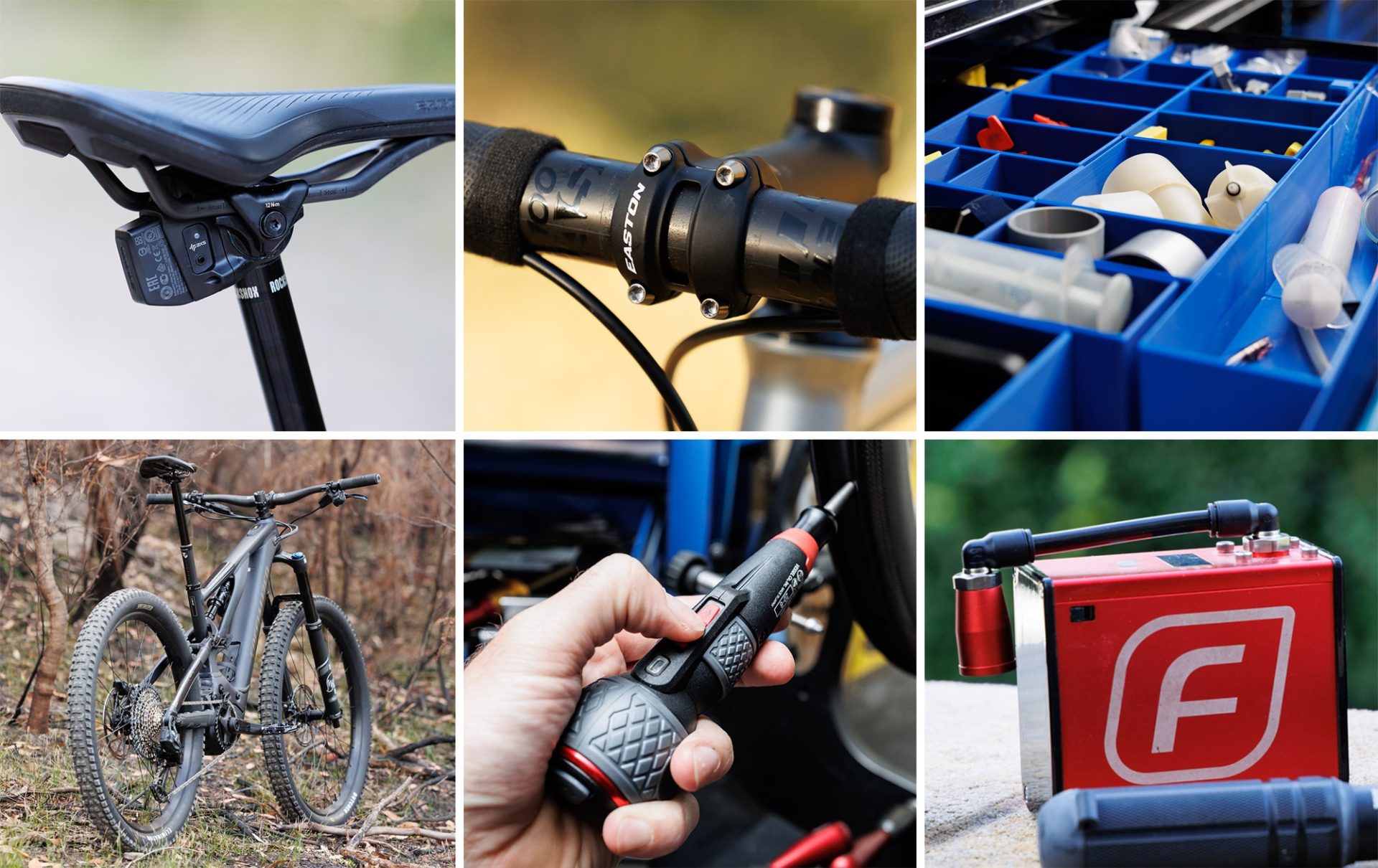Welcome to the first of our Few of My Favourite Things articles, an annual series we hope continues for many years to come. It’s a retrospective look at the products and things that had the most impact on us over the past year. In some cases, these are products that we’ve come to use daily. In other cases, they’re products that have changed our perspective or benefited our riding experiences. And in rare cases, they’re just products we feel stand above the competition and merely deserve praise.
The past year feels like a dream that’s flown by. I started a new job, at an equally new company, and found more freedom than ever before. While my travel abroad was far more limited, the time at home saw me further obsess over the nuances of my passions and even buy into a new riding category.
Dare I admit that I’ve spent less time on slick tyres than ever before, and more time on dirt … or staring at objects held by repair stands. I’m not complaining.
Onto the short list of products and things that left the biggest impression on me. These are the products I’d buy again and comfortably suggest to friends (and strangers!). Apologies in advance as there are a couple of unintended themes to all of these.
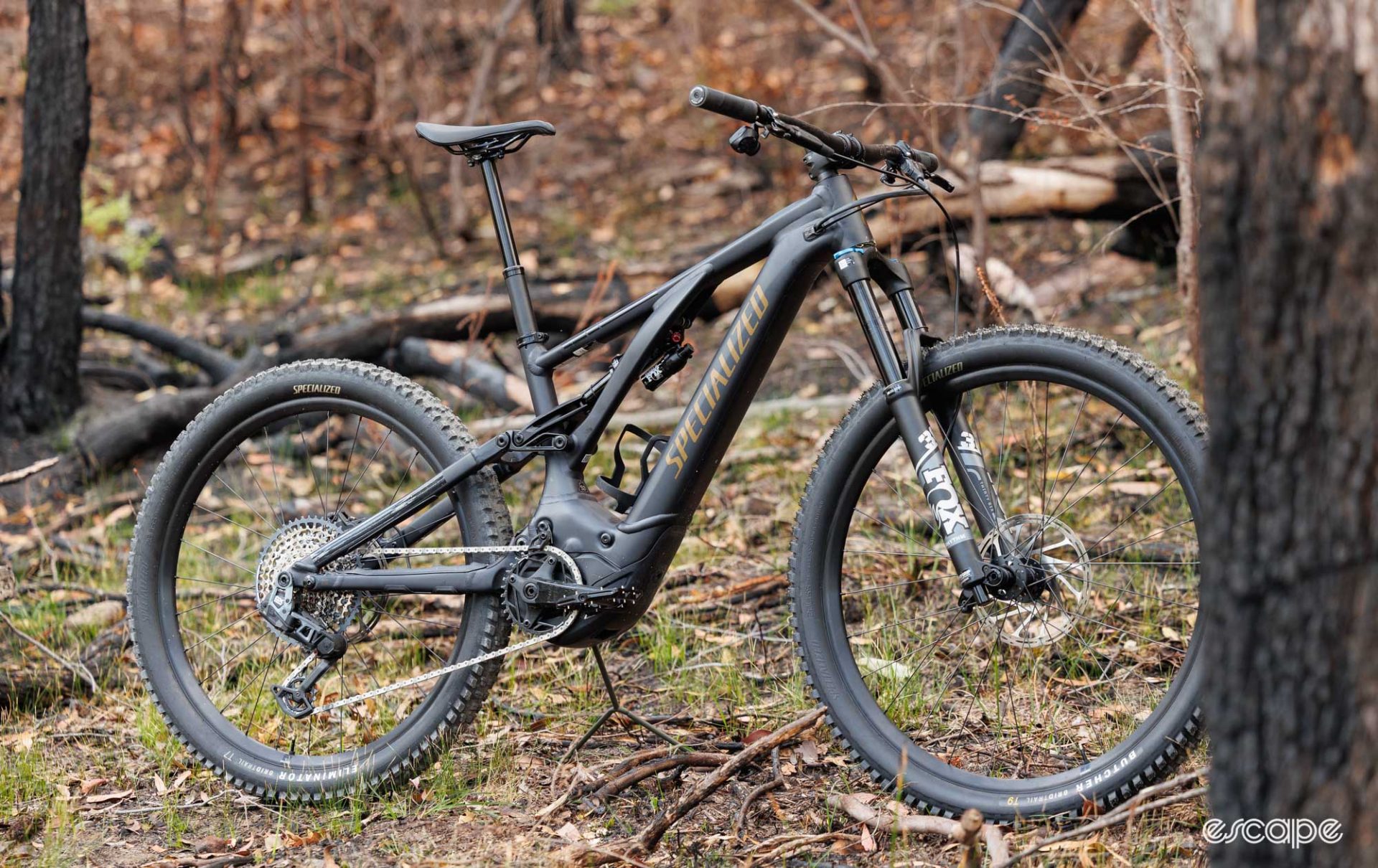
eMTB
When I think about the most transformative product for me this year, it’s undoubtedly my recent purchase of an electric mountain bike (eMTB).
I live wonderfully close to some of Sydney’s most technical riding areas and yet I often stay clear of many of these spots because they often demand a bigger bike (longer travel, slacker geo, etc). When I’ve owned bigger bikes before, I always found they gave me the confidence to try stuff, and I could then take that confidence back to my usual, more XC-oriented bikes. The problem is, those bigger bikes aren’t all that enjoyable to climb with, and while our total elevation isn’t much, we sure do have some punchy climbs that can hurt!
Enter the eMTB. Now I have a bike with the geometry, suspension travel, and capable tyres that bring confidence to my local trails. Meanwhile, the powerful motor gives me zero pause about heading downhill when the return climb sucks. Instead, I’m doing far more descending than before. In a short period, the e-bike has helped turn my dwindling confidence around while helping me regain the upper body strength that riding such terrain requires.
I could write an entire article about my buying, customising, and general learning process here (and perhaps I will if there’s demand). The short story is that I settled on a Specialized Levo Turbo Alloy Comp because of its solid reputation, geometry figures that made sense to me, and no obvious dumb design decisions (mainly that the top headset bearing has no cables or delicate wires running through it). Plus, it being on sale didn’t hurt. Meanwhile, I chose the heavier, full-power version based on feedback from friends who claimed it opens the door to riding trails differently and without the battery drain anxiety that some lighter versions suffer.
As a side note, eMTBing has seen me open the creaky door to previously forgotten product categories such as flat pedals, FiveTen shoes, riding without a chamois, and so much more. It’s been a hoot!
Price (Specialized Turbo Levo Comp Alloy, stock form): US$7,000 / AU$10,900 / £5,750
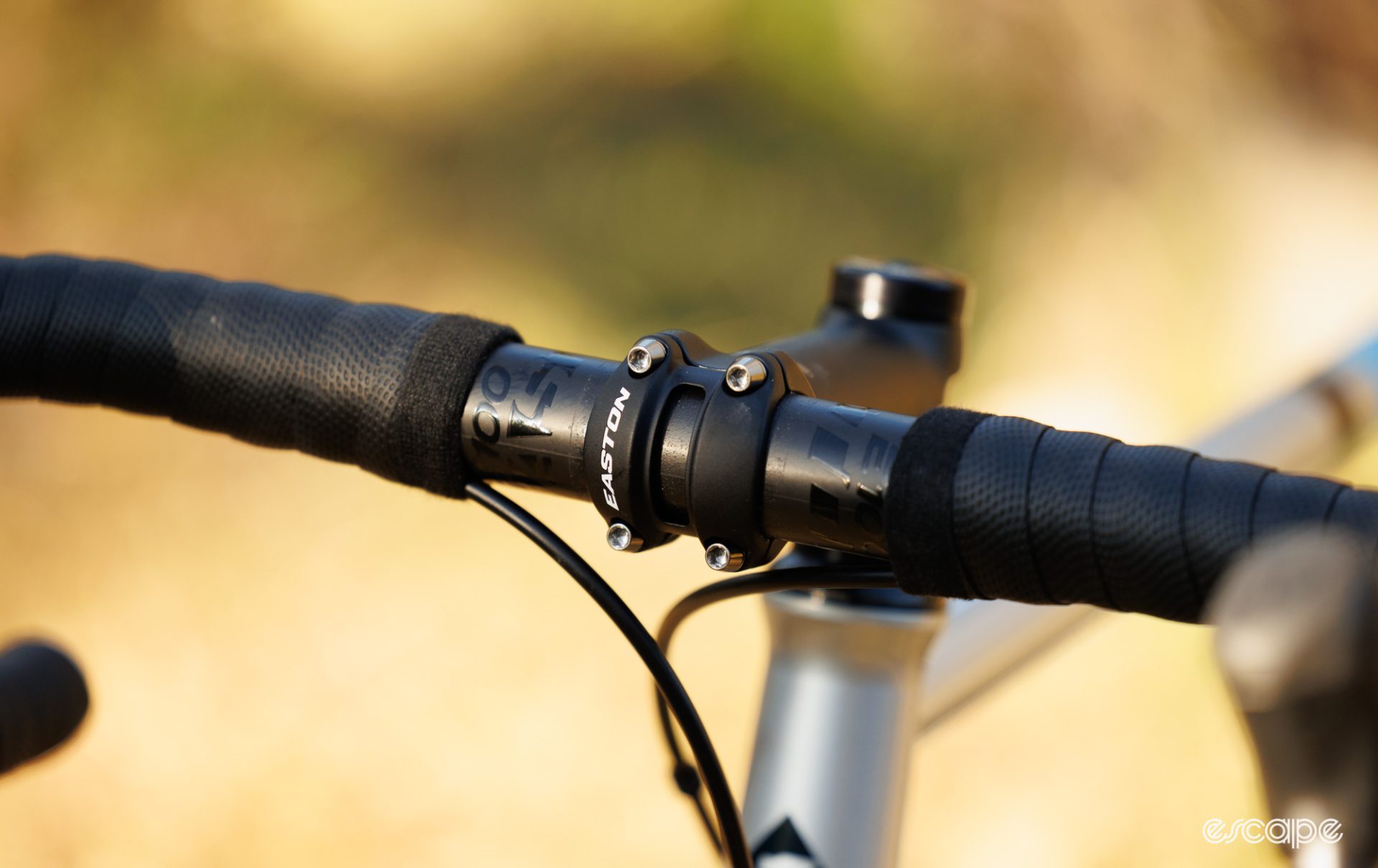
Flexier handlebars
The front ends of modern bikes are often too stiff. It was only a couple of decades ago when every bike had a straight steerer tube and a smaller-diameter handlebar, and the ride was often better for it.
Today, almost every new mountain bike is sold with oversized 35 mm handlebars, while many dropbar bikes have unforgiving tapered steerer tubes matched with similarly rigid handlebars. Great grips and bar tape can only do so much, and that’s why a handlebar with some level of intentional flex has become an increasingly important feature for me.
It was on my trail mountain bike that I first intentionally decided to replace one perfectly fine (carbon) handlebar for one that was hopefully less fatiguing on my hands and arms. I already had the oversized 35 mm size of bar and stem, and rather than size down, I bought a OneUp Components Carbon – a 35 mm handlebar designed to mimic the ride feel of a 31.8 mm bar. Meanwhile, I consciously decided to stick with a more flexible 31.8 mm bar and stem duo on my cross-country hardtail. In both cases, my hands are noticeably happier and the onset of arm pump is delayed.
Next was the gravel bike. The basic alloy handlebar lasted just two rides before I desperately sought respite. There are a number of smoother-riding handlebars in this category, but most feature too much flare or width for my tastes. I eventually landed on the Roval Terra, a premium carbon handlebar that I’d previously tried on a Specialized Crux – both the shape and subtle flex were precisely what I wanted.
Finally, that led to new bars when rebuilding my disc-brake road bike and seeking a narrower 40 cm width. Over a decade ago, I acquired a pair of Easton EC90 SLX bars with a lovely amount of flex and a great shape. Since then I’ve chosen more affordable alloy bars, but this year, I returned to a familiar bar in the Easton E100 and felt right back at home. I’ll also give a shout-out to the Pro Vibe SL Compact handlebar, another premium bar with a welcomed amount of compliance.
While there are a few comfy alloy handlebars, such smooth riding comfort is more commonly found with expensive carbon handlebars. Unfortunately, not all carbon bars offer such smooth-riding attributes, and some are even stiffer than an aluminium bar. This is an area I hope to dive into more in future.
OneUp Carbon: US$170 / AU$250 (approx) / £150
Roval Terra: US$250 / AU$380 / £225
Easton E100: US$350 / AU$TBC / £350

Vessel electric screwdriver
It’s no secret that I think about tools a lot. I often try to find tools that make common tasks more efficient, consistent, and/or enjoyable. Along those lines, I hate slowly threading multiples of the same fastener by hand.
Ratchets can be a huge help in this regard, while a larger electric impact driver is a favoured tool for chainring and disc rotor bolts that tend to have a higher loosening torque. Sitting somewhere between those two tools is a new favourite – the Vessel 220 USB Plus electric screwdriver (currently not stocked in the USA).
Effectively the e-bike of screwdrivers, this USB-C-rechargeable tool is perfect for many lower-torque applications found on bicycles (M6 or smaller hardware). It works exactly like up a regular old screwdriver (up to a 10 Nm manually applied load), but when you need it, simply slide the switch for electrically assisted spinning in either threading direction for up to 2 Nm of torque.
This tool is simple, fast, and, most importantly, safe to use on things like stem faceplates, bottle cage bolts, and anywhere else you find yourself with multiple long-length bolts. It has also become my go-to for lacing wheels. And compared to bulkier electric tools – like a drill or impact driver – the ability to use this tool like a regular screwdriver means you get a great feel for getting a fastener started and then applying final torque by hand (or with a torque wrench).
As I previously wrote in the first New Tools Day article, there are a few different versions of this product. I recommend the newest one as it introduces USB-C charging and adjustable speed.
Price: US$TBC / AU$120 / £TBC
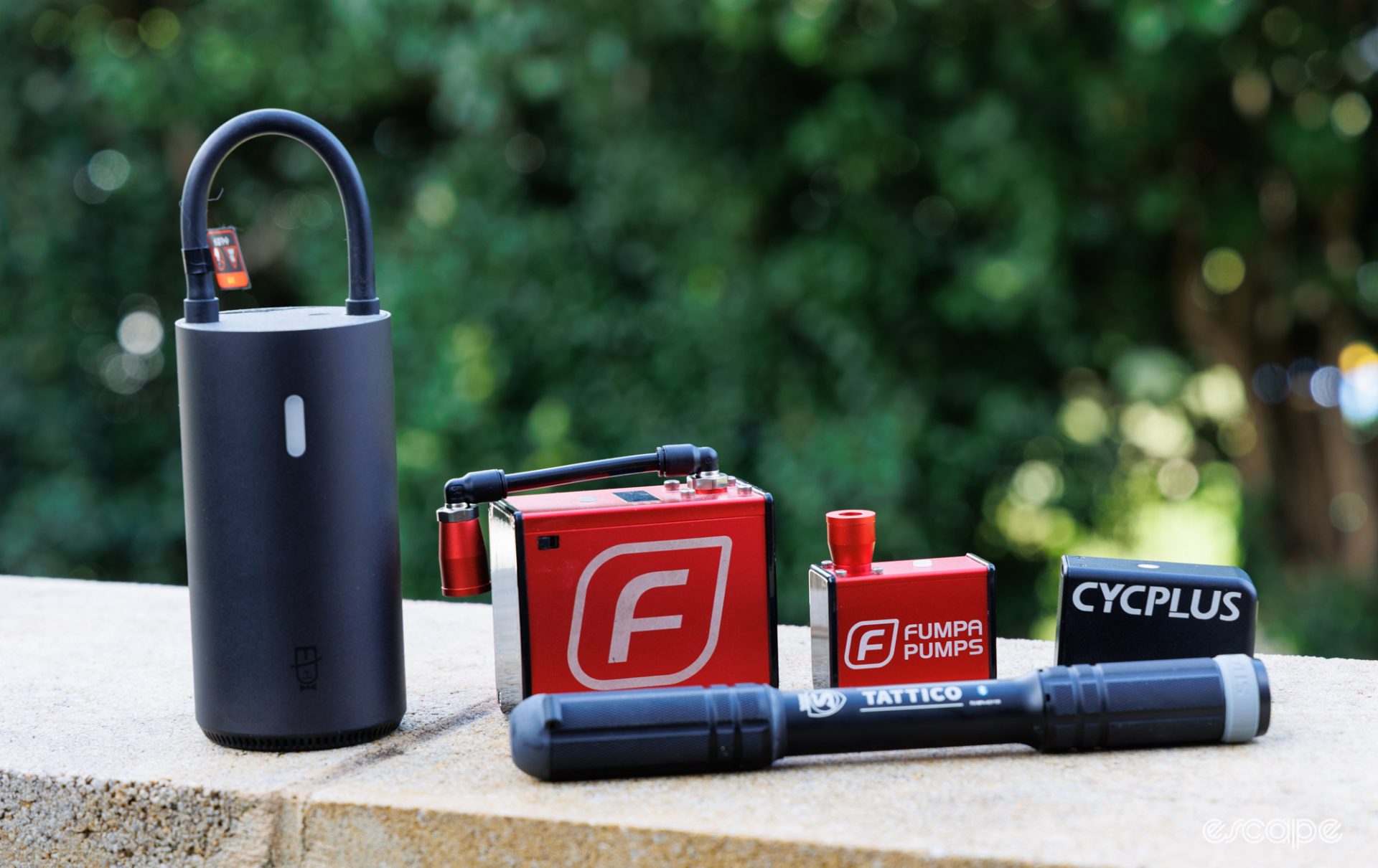
Fumpa Bike Pump
This isn’t the first time I’ve mentioned the Fumpa as a favourite product, and given I have one currently sitting on a sideboard along with family photos, I’d say it’s earned its spot to be mentioned again.
Fumpa is an Australian company that makes handheld electric air pumps for bicycle tyres. The Fumpa Bike Pump (second from left in the image above) is what I use, and it combines a USB-C-rechargeable battery, a slip-fit valve, and an accurate digital gauge into an inflator that’s similar in size to a can of soft drink. Most importantly, it goes hard with the inflation and is surprisingly the only product that every bike ride of mine has in common. Between this and an air compressor in my workshop, I rarely use a floor pump.
This may sound extreme, but if I had a Xiaomi, Bosch, Ryobi, Milwaukee, Mojietu, or similar electric pump (OK, I do …), I’d still choose to use a floor pump because it’s infuriating to watch how slow all of these other electric inflators are. By contrast, the Fumpa is more compact, vastly faster to connect to (and disconnect from) the valve, and it then inflates with rapid efficiency.
If you want one, also budget for the Elbow Nozzle kit, which allows you to revert the Fumpa to how it was initially designed, something I feel reduces the vibration transmitted to the wheel and you. Keep it charged above 30%, so it always has enough juice when needed. And expect an angry reception if you’re using it while others are asleep in the next room – it’s loud! Despite those issues, I’m a fan.
Related, I previously reviewed the ride-friendly NanoFumpa and Cycles Cube inflators. These lack an all-important gauge for home use and so shouldn’t be confused with the regular Fumpa in my list here. Truthfully I don’t carry either of these pocket-sized inflators on rides, but they’re a nice option if you’re the MacGyver of the group.
Price: US$149 / AU$189 / £TBC
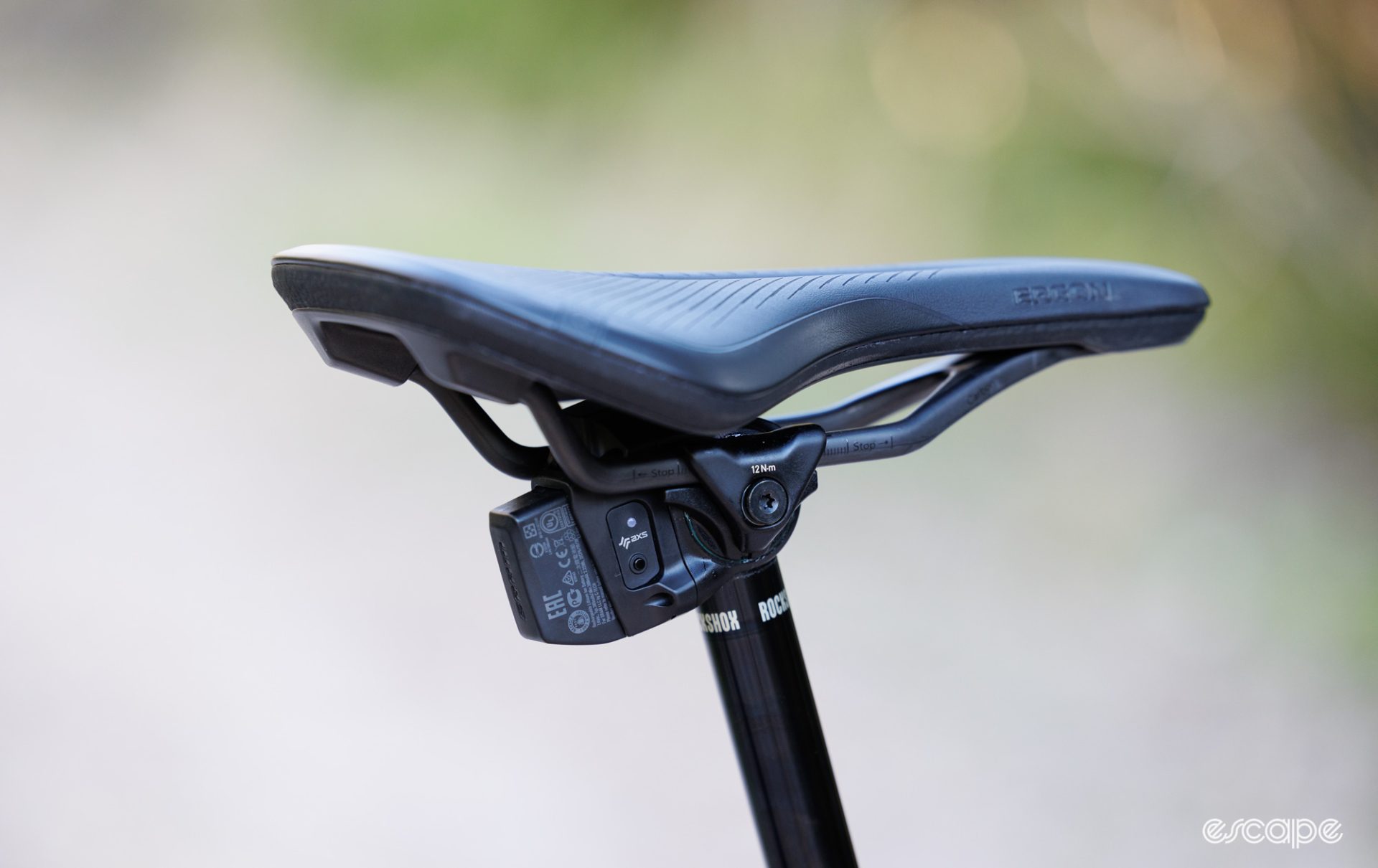
RockShox Reverb AXS wireless dropper post
OK, it’s right about now that I realise I’m a freakin’ hypocrite. I’m constantly praising mechanically operated objects, and yet here I am, with all but one of my favourite products relying on electricity. Well, shit, I guess I’m a sucker for the convenience of modern tech after all.
Dropper posts have quickly become a staple on modern mountain bikes, and geometry has adapted to the assumption of their use. Today, I wouldn’t choose to own a mountain bike without a dropper.
The problem is that not all dropper posts are great. Some feel sluggish to raise the saddle and can keep you awkwardly hovering and waiting for a seat. Some feel heavy at the lever end. And a few too many are just a pain to set up correctly with specific bikes and remote levers.
And that’s where my appreciation for the RockShox Reverb AXS wireless dropper comes in. The electronic actuation means the effort at the lever is almost telepathic. Meanwhile, the speed of extension rivals the likes of BikeYoke, WolfTooth, and other mechanical droppers I’ve come to appreciate. And when the time comes to take it out for service, move it to a new bike, or fit it to a test bike supplied without a dropper, it’s as easy as a rigid post.
OK, this is my favourite dropper, but there are reasons why I only own one despite owning other mountain bikes. Firstly, the Reverb AXS is eye-wateringly expensive, almost double that of a brilliant cable-operated post. Then it’s somewhat of a boat anchor and quickly adds 100 grams or more weight over other comparable posts. The AXS battery is an eye-sore and known to foul on the rear tyre of small mountain bikes. And lastly, RockShox doesn’t produce it in a travel longer than 170 mm – not an issue for XC riding, but a deal-breaker for many on longer-travel bikes.
Either way, as cable routing continually worsens on many new bike releases, the demand for electronic droppers will only increase. TransX, KS, X-Fusion, and Magura have all recently released options in the market (which I’ve yet to try), and I’m most eager to see where BikeYoke goes with its prototype.
Price: US$861 / AU$1,300 / £750
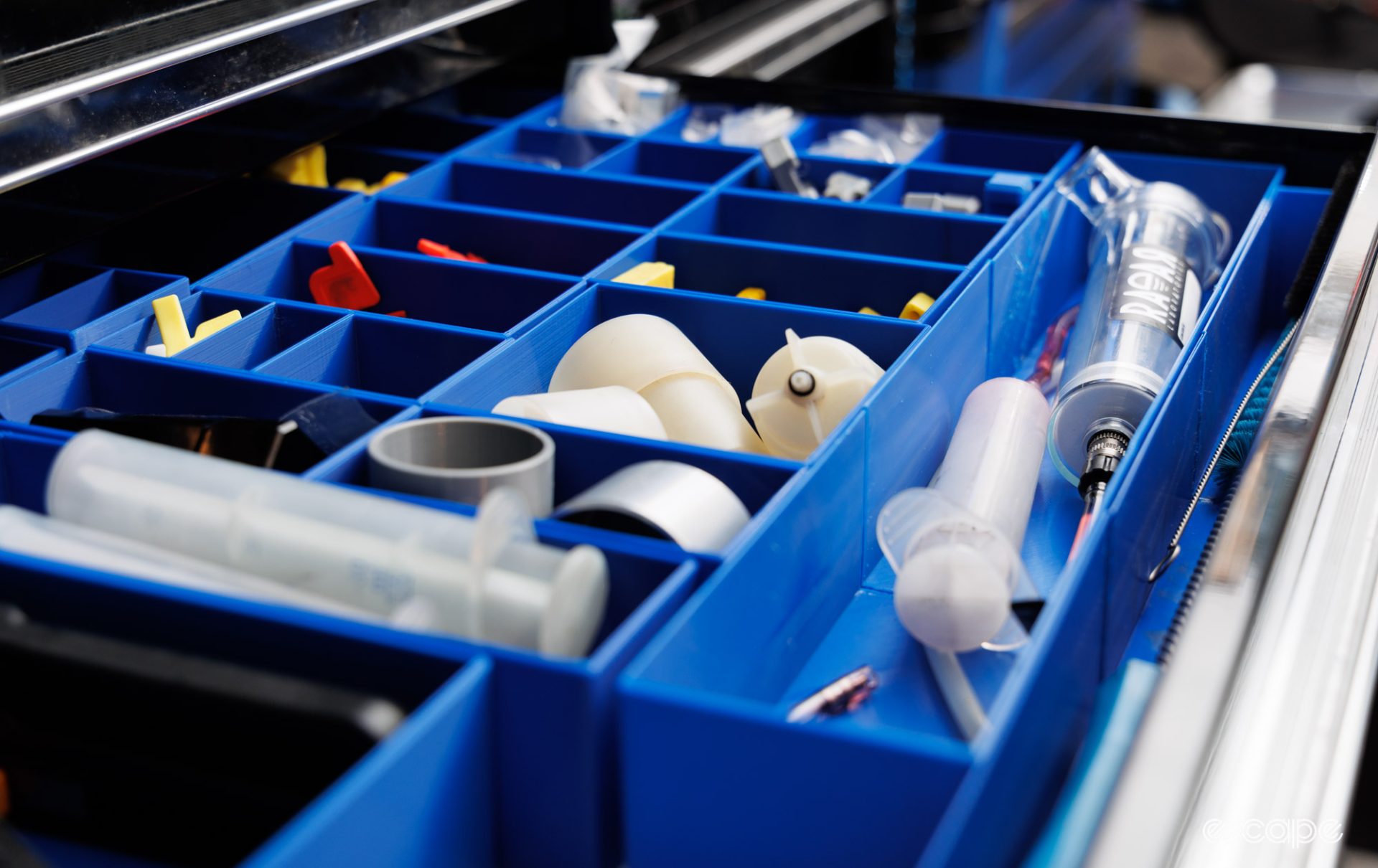
3D printer
Finally, I get to my beloved 3D printer, an item I included in a similar list a little over a year ago at The Old Place (rest in pieces). I plunged into 3D printing with a Prusa Mini+ just as people crawled out from their caves, stopped baking bread, and started to socialise again. It has since proven to be less of a hobby, and more a problem-solving tool.
These days I rarely service a bike without involving some form of niche 3D-printed tool. Every brake I bleed uses improved bleed blocks (thanks to Escape member Chris Heerschap). Removing a fork sees me keep handlebars, spacers, and headset pieces in place with a printed dummy fork (a godsend for modern mountain bikes with headset cable routing). Stuck cranks are removed with a perfectly sized and non-marring plastic punch. Many tools are neatly organised with printed containers. And heck, even a number of my tools are now mounted for quick access with bespoke holders (bonus points for integrating with magnets).
It’s not just limited to workshop things, either. I recently got new brakes for my trail bike and needed a new adapter for the Wolf Tooth Remote Pro lever, but rather than order just that, I designed and printed one. A little over a month ago I solved a headset spacer issue I had with the Polygon Helios A7X test bike. Just last week I was using an Abbey Bike Tools Fit Kit on my gravel bike and spent all of three minutes designing a new crank bullet (it holds the tang of a tape measure in the centre of the spindle) to match the new Garbaruk Road/Gravel crankset (review to come).
You certainly start to view common tasks differently when you can easily whip up a solution. Unfortunately for me, I’m now more certain than ever that machining tools are missing from my life.
Price (Prusa Mini+): US$459 / AU$700 (approx) / £370 (approx). There are endless cheaper and more premium options in this space.
Had similar experiences with any of the products here? Please let me know in the comments. As usual, I’m happy to answer any questions you have in relation to what’s covered.
Expect more articles on this theme from a few other staff members of Escape Collective. James Huang is next …
What did you think of this story?
